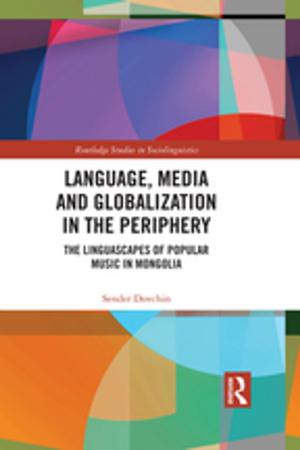Apartheid Vertigo
The Rise in Discrimination Against Africans in South Africa
Nonfiction, Social & Cultural Studies, Social Science, Cultural Studies, Minority Studies| Author: | David M. Matsinhe | ISBN: | 9781317180210 |
| Publisher: | Taylor and Francis | Publication: | May 23, 2016 |
| Imprint: | Routledge | Language: | English |
| Author: | David M. Matsinhe |
| ISBN: | 9781317180210 |
| Publisher: | Taylor and Francis |
| Publication: | May 23, 2016 |
| Imprint: | Routledge |
| Language: | English |
Apartheid vertigo, the dizzying sensation following prolonged oppression and delusions of skin colour, is the focus of this book. For centuries, the colour-code shaped state and national ideals, created social and emotional distances between social groups, permeated public and private spheres, and dehumanized Africans of all nationalities in South Africa. Two decades after the demise of official apartheid, despite four successive black governments, apartheid vertigo still distorts South Africa's postcolonial reality. The colour-code endures, but now in postcolonial masks. Political freedom notwithstanding, vast sections of the black citizenry have adopted and adapted the code to fit the new reality. This vertiginous reality is manifest in the neo-apartheid ideology of Makwerekwere - the postcolonial colour-code mobilized to distinguish black outsiders from black insiders. Apartheid vertigo ranges from negative sentiments to outright violence against black outsiders, including insults, humiliations, extortions, searches, arrests, detentions, deportations, tortures, rapes, beatings, and killings. Ironically, the victims are not only the outsiders against whom the code is mobilized but also the insiders who mobilize it. Drawing on evidence from interviews, observation, press articles, reports, research monographs, and history, this book unravels the synergies of history, migration, nationalism, black group relations, and violence in South Africa, deconstructing the idea of visible differences between black nationals and black foreign nationals. The book demonstrates that in South Africa, violence always lurks on the surface of everyday life with the potential to burst through the fragile limits set upon it and possibly escalate to ethnic cleansing.
Apartheid vertigo, the dizzying sensation following prolonged oppression and delusions of skin colour, is the focus of this book. For centuries, the colour-code shaped state and national ideals, created social and emotional distances between social groups, permeated public and private spheres, and dehumanized Africans of all nationalities in South Africa. Two decades after the demise of official apartheid, despite four successive black governments, apartheid vertigo still distorts South Africa's postcolonial reality. The colour-code endures, but now in postcolonial masks. Political freedom notwithstanding, vast sections of the black citizenry have adopted and adapted the code to fit the new reality. This vertiginous reality is manifest in the neo-apartheid ideology of Makwerekwere - the postcolonial colour-code mobilized to distinguish black outsiders from black insiders. Apartheid vertigo ranges from negative sentiments to outright violence against black outsiders, including insults, humiliations, extortions, searches, arrests, detentions, deportations, tortures, rapes, beatings, and killings. Ironically, the victims are not only the outsiders against whom the code is mobilized but also the insiders who mobilize it. Drawing on evidence from interviews, observation, press articles, reports, research monographs, and history, this book unravels the synergies of history, migration, nationalism, black group relations, and violence in South Africa, deconstructing the idea of visible differences between black nationals and black foreign nationals. The book demonstrates that in South Africa, violence always lurks on the surface of everyday life with the potential to burst through the fragile limits set upon it and possibly escalate to ethnic cleansing.















